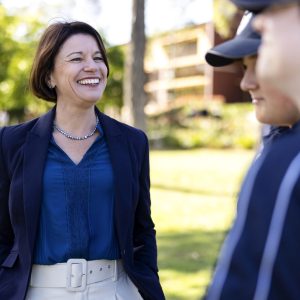Published on May 24, 2024
In 2018 Hans Rosling published a book titled Factfulness: Ten Reasons We’re Wrong About the World and Why Things Are Better Than You Think. According to Rosling we are hard-wired to be dramatic or make cognitive leaps in logic based on the worst-case scenario rather than the facts that are before us. As a result, our perceptions are often skewed. Rosling shares that because of our “dramatic attention filter”, we are “highly selective and end up processing mainly dramatic information”. This is brilliantly portrayed in the graphic below. The fact that Rosling describes it as a natural human instinct is important: it is not bad, but something to be aware of and we need work on building our “thinking muscles” and the habits of factfulness.

This is an interesting concept for us in schools not only in terms of the work in the classroom (how do we ensure students develop as critical thinkers who are skilled at drawing conclusions from evidence not just their own biases) but also in relation to the assumptions that often guide our thinking every day.
Most recently, we have been hearing a lot about social media and the need for tighter regulations for social media companies in Australia. This has come up in relation to the horrific stabbing in the Wakeley Church and the ensuing riot. There are quite rightly concerns about what young people can access and consume on social media. In a highly unregulated environment – as there currently is around social media – it is incumbent on us as parents and schools to put good controls in place (I have written about this before) and for both parents and teachers to explicitly model the pursuit of “factfulness” and a curious, critical approach to the information we consume (see this previous blogpost).
The reality with influencers on social media, and some of the mainstream media, is that they are very aware of the dramatic attention filter. Click bait is important – the number of clicks measures success and there is nothing like a sensational social interest story to generate clicks. As I was looking through the Instagram feed for the Today Show report on the renaming of the Mother’s Day Stall here at HVGS, I could see this in action. The headline was sensational, and the comments equally so. It was a dramatic story, a headline grabber, and the human impulse is to grab it and run with the dramatic story.
I have written before about the importance of slow thinking both in relation to systems thinking and the art of listening. As we look at how best to support our young people (and ourselves) with navigating the challenges of social media, returning to Rosling’s ideas can be helpful. His book is practical and talks about the “ten common story types” and the “rules of thumb” that can help us control our natural, human tendency towards the dramatic instinct. When faced with a fact, he encourages us to pause and tune into our reaction and to “hear” our thinking. What words are we using to talk about that fact? When we take a moment to slow down and have an internal dialogue about our reaction to information, we can bring some control to bear on our dramatic instinct.
For instance, a student might look at their grade for a test and respond with “I’m never going to get better at this subject!” or “I’m a failure”. At work here is the destiny instinct (I’ll never get better), the size instinct (it is no longer about performance on one test, but about the whole subject) and the straight-line instinct (there will never be any change). You can see the descriptions of these instincts in the graphic below from the Gapfinder website. The graphic is a great conversation starter at home when you are watching the news or engaging with social media or reviewing report grades with your child.
One of the most dangerous generalisation instincts for young people is around body image, and this is fuelled by social media where people can manipulate their own images to be more “attractive”. This builds a sense that everyone looks like this – free of wrinkles, lines, blemishes, cellulite and all the things that are part of being a human in a human body. Students use language like “but all my friends do it” or “everybody is wearing it” all the time. As a family, bringing students back to the difference, talking about how images are manipulated and therefore not actually what the real person looks like, can help them build the habits they need to recognise the dramatic stories that trigger their dramatic instincts.

This is one of the reasons I champion the IB programmes because they build critical thinking, creative thinking and foster a deep curiosity. Our students need to ask questions, slow down their thinking, check their assumptions and build constructive ways to share ideas and engage with others who think differently to themselves. The concept of “factfulness” and the related tools can help all of us build better habits that rein in our natural dramatic tendencies.
At a time when we need to be hopeful and optimistic, and work together to build community to address the challenges that lie ahead, embracing “factfulness” might be a great way to stay focus on what we know rather than what we think we know.

